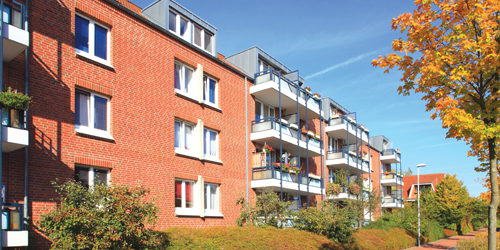
Led by Robert Dowling, Partner at Carpenter Box, the MHA Construction & Real Estate team have worked together to provide a national outlook on the changes facing Buy to Let landlords. MHA is a national association of independent accountants which Carpenter Box helped to found in 2010.
Here Robert presents the first of two articles to help you better understand the changes that landlords now face. In the second article we’ll look at ways that landlords can reduce their tax burden.
Taking the Heat out of the Buy to Let Kitchen
A number of measures were announced in the July 2015 Budget by the previous Chancellor George Osborne and then PM David Cameron as part of their ‘one nation’ government. The idea was to reward hard working people and ensure that they could enjoy the benefits of home ownership. Some of these measures were focussed on increasing the supply of residential stock, including the unlocking of public land for development and changes to planning rules for SME builders.
Those measures were designed to help to increase the supply of homes over the medium to long term. However, it was the announcements of tax changes which took effect almost immediately and over the short term that have caused both controversy and delight; the former for landlords and individuals attempting to purchase a second home, and the latter for those trying to get on to the housing ladder to provide a home for their families.
The main July 2015 budget announcements affecting the residential property market were:
• The increase of stamp duty by 3% for the purchase of a second home from April 2016.
• The removal of the 10% wear and tear allowance from April 2016.
• The restriction of tax relief on interest for buy to let landlords being phased in from April 2017.
• The reporting and payment of Capital Gains Tax on a disposal within 30 days. This acceleration of the tax payable will apply from April 2019.
It is the increase in the stamp duty payable from April 2016 that this article will concentrate on.
Stamp Duty Land Tax
The new rule changes to Stamp Duty Land Tax affect those individuals buying a second residential property. Corporate bodies buying residential property will either be subject to these additional rates or a more penal rate of 15% if the property is over £500,000 and is not used for a qualifying purpose. This penal charge was introduced to prevent abuse of the stamp duty rules where there was a trend to envelope an ‘expensive’ dwelling within a company before selling the company rather than the property itself.
An additional 3% tax is now being charged to individuals purchasing a second residential property regardless of them being a property magnate with an extended history of purchasing such properties for the rental incomes, or a family that just happens to be moving home and are having to purchase the second home before selling the first.
As expected the market reacted to this additional charge with volatile pricing and a large rise in the volume of property transactions in February and March 2016.
House prices increased by 2.2% in March 2016 alone and were then reported to have fallen by 0.8% in April 2016.
The number of property transactions in March 2016 was 165,480; an increase of 48,550 compared to February 2016, and was the highest number of properties transacted in a single month since records began in April 2005.
A number of individuals who were moving home in the spring were quite rightly confused by the new stamp duty rules due to the implementation of the policy appearing to be quite rushed. Would they suffer a permanent 3% additional tax charge? Would there be a mechanism to reclaim the additional stamp duty once paid, if they sold the original home shortly afterwards?
In fact, where an individual sells their previous main residence after purchasing a new main residence, a refund of the additional SDLT may be claimed. Initially the previous main residence had to be sold within 18 months to be able to claim back the additional 3%, but that was increased to 3 years in the March 2016 budget.
Landlords are also asking what can be done to avoid suffering the 3% charge in the future. Would this charge be applied if they move a property portfolio into a company to avoid future tax disincentives?
Some landlords who have suffered the additional stamp duty charge have already attempted to pass on the increase in their ‘cost’ by increasing rents rather than pulling out of the market which, in a location where there is a shortage of good stock, was always on the cards.
If this tactic is widespread, Cameron and Osbourne’s attempt to manipulate the residential market may be a policy fail and will have just had the effect of making it even more difficult for those hard workers who already cannot afford to buy a home, by pricing them out of the rental market too. Additionally, with higher rents the ability to save for a deposit becomes even more difficult.
In next month’s article, we will explain some of the ways in which these additional tax burdens can be mitigated. In the meantime, should you want any business or tax advice around the construction and the real estate sector, you can contact Robert on 01293 277670.






